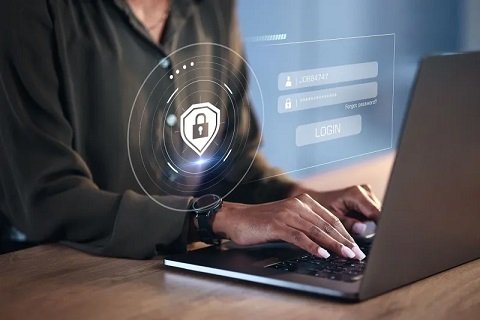Introduction to Phishing Myths
In the rapidly evolving digital landscape, phishing has become one of the most prevalent threats, targeting both individuals and organizations. These attacks have evolved significantly, from rudimentary email frauds to sophisticated scams that employ advanced techniques to deceive even the most vigilant users. Despite widespread awareness, myths surrounding phishing continue to persist, leading many to underestimate their vulnerability. Addressing and debunking these myths is paramount to developing a robust defense against these deceptively simple yet potent cyber tactics. Through comprehensive phishing training, users can recognize and effectively counter these threats, greatly enhancing their cybersecurity posture.
Myth 1: Phishing Only Targets the Uninformed
The notion that phishing is exclusively a threat to the uninformed or technology novices is a dangerous misconception. In reality, cybercriminals have developed a variety of tactics tailored to fool even experienced users. A multitude of high-profile figures, including top executives and tech industry veterans, have fallen victim to cleverly orchestrated phishing attacks, signaling that the threat is ubiquitous. These targeted scams often leverage psychological principles, preying on human emotions like trust and urgency. To combat this, it is crucial to engage in regular awareness programs and stay informed about the latest trends in phishing techniques, enabling one to maintain a heightened state of vigilance at all times.
Myth 2: You Can Easily Spot a Phishing Email
Many people confidently believe that they can easily spot phishing emails due to telltale signs such as poor grammar, suspicious email addresses, or generic greetings. However, this assumption is increasingly misguided. Cybercriminals have honed their craft to fine art, creating emails that closely mimic those from trustworthy organizations, complete with convincing logos, professional language, and legitimate-looking links. These sophisticated emails are designed to bypass traditional security filters and deceive the user with an aura of authenticity. The increasing sophistication of these emails highlights the need for constant vigilance and stresses the importance of employing multi-factor authentication and cautious scrutiny of unsolicited communications.
Myth 3: Phishing Is Only Email-Based
While email remains the most common medium for phishing attacks, it is by no means the only channel. Over the years, phishing tactics have diversified significantly, with attackers exploiting a wide array of platforms including SMS, voice calls, and social media. This multidimensional threat landscape demands a comprehensive understanding of how phishing schemes operate across different mediums. SMS phishing, or ‘smishing,’ tricks users into believing they have received messages from credible sources, while voice phishing, or ‘vishing,’ involves phone calls from fraudsters impersonating legitimate organizations. Social media platforms are also increasingly used to craft personalized attacks, exploiting the wealth of personal data available online. Recognizing and educating oneself about these varied forms of phishing is essential for comprehensive protection against cyber threats.
Myth 4: Antivirus Software Offers Complete Protection
The belief that antivirus software provides complete immunity against phishing attacks is a perilous fallacy. While antivirus programs are integral to detecting and mitigating threats, they are not foolproof. Many phishing attacks circumvent these defenses by exploiting human vulnerabilities rather than technical flaws. Consequently, it is crucial to adopt a multi-layered security strategy that goes beyond antivirus solutions. This includes regularly updating software, employing firewalls, conducting security audits, and, importantly, fostering a culture of awareness within organizations. Regular training sessions and simulations can dramatically improve an organization’s resilience, empowering employees to recognize and report suspicious activities effectively.
Myth 5: Organizations Are Well-Equipped to Handle Phishing
A common but misguided belief is that organizations, particularly larger ones, have all the necessary measures in place to fend off phishing attacks. However, many companies, regardless of size, face challenges such as antiquated security systems, insufficient employee training, and inadequate incident response plans. Numerous case studies have shown that even enterprises with robust IT departments can fall victim if they lack a nuanced understanding of the evolving threat landscape. This reality underscores the pressing need for continuous improvement of security measures and regular updates to counter emerging threats, prioritizing both technological enhancements and human factors.
Myth 6: Phishing Schemes Are Always Massive
The assumption that phishing schemes are always large-scale and indiscriminate is misleading. While some campaigns target thousands of users at once, others are meticulously crafted to target a specific individual or small group with personalized information. Known as spear-phishing, these targeted attacks use sensitive data gathered from social media profiles or other online sources to create believable contexts and exert psychological pressure on the victim. Understanding the targeted nature of spear-phishing emphasizes the need for cautious online conduct. It underscores the importance of safeguarding personal information to prevent it from being used in such attacks.
Conclusion: Stay Informed, Stay Safe
In an era where digital threats are ever-present, dispelling common myths about phishing is critical to fortifying individual and organizational defenses. By recognizing these misconceptions and implementing informed, proactive strategies, users can significantly mitigate their risk of falling victim to such schemes. Continuous education, awareness, and the adoption of best practices form the foundation of a resilient defense against phishing. By staying informed and preparing effectively, one can navigate the digital landscape with confidence, turning potential vulnerabilities into fortified strengths.
